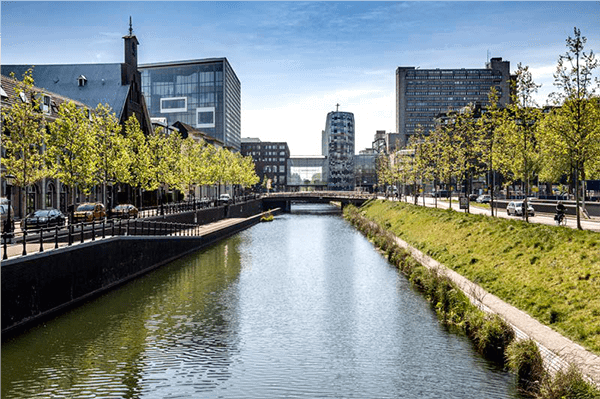Urban parks provide many benefits to cities that are facing growing populations and climate change, including improving the health of citizens, reducing the urban heat island effect, and supporting local ecosystems. Creating green urban spaces was the subject of the July AIPH Green City Briefing, which presented Utrecht, the Netherlands, as a city that is showing impressive progress.

Organized by the International Association of Horticultural Producers (AIPH) in collaboration with the Worshipful Company of Gardeners (WCoG) and sponsor Expo 2023 Doha Qatar, the AIPH Green City Briefings 2022/23 are a series of one-hour webinars focussing on cities around the world that can demonstrate significant progress in including plants and nature in their city’s form and function.
Jayne Miller, Chair of World Urban Parks, led the session and was joined by Jeroen Schenkels from the city of Utrecht, the Netherlands. Greening the city is of major importance for Utrecht. To rise to the challenge of climate change and an increasing population, the city has committed itself to a ‘Healthy Urban Living for all’ approach, prioritizing living environments that are simultaneously less polluted and that stimulate healthy behavior amongst its inhabitants. Jeroen commented: “Healthy urban living for people and nature is in our city policies.”
The city is faced with the challenge of balancing urban development with greening initiatives. To achieve this, Utrecht has broken down the city into five levels of implementing greening strategies: from green streets to green around the city. The plan also highlights the importance of the mobility of people and animals between green spaces. “We want to create a city where every citizen can reach a green area within ten minutes,” Jeroen explained.
This approach to city-wide greening relies on developing a master plan. Hans Smolenaers, a landscape architect and urban designer with Arcadis, presented the ‘Expo Master Planning Guide,’ which AIPH developed in collaboration with Arcadis. Horticultural Expos provide cities with an opportunity to create or develop green spaces that become available to the local community when the Expo closes.
Hans said: “When organizing an Expo, first of all, you have to think about its legacy. For example, the site of Floriade in 1982 is now a city park that is still in use.” By highlighting legacy as a core component of designing an Expo, the guide affirms that an Expo Master Plan is ‘a dynamic, long-term planning document that provides a conceptual layout to guide the area development.’
For more information:
AIPH
www.aiph.org
